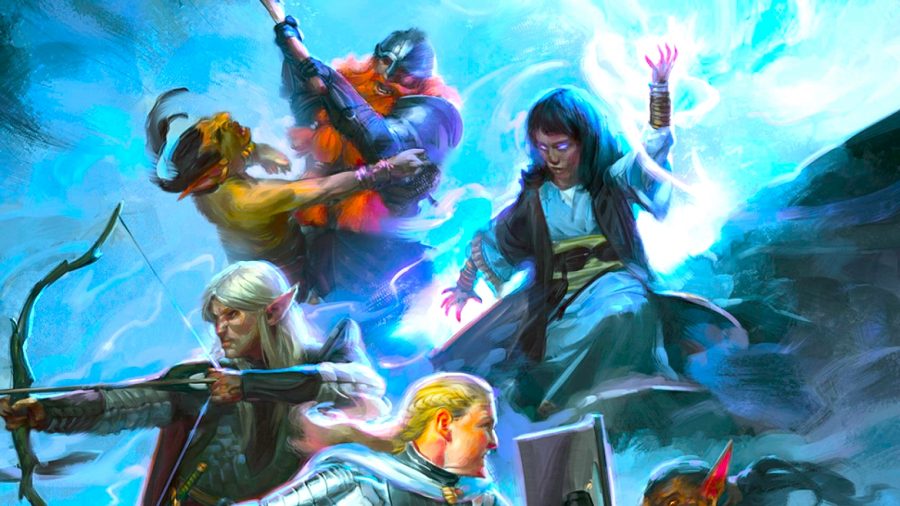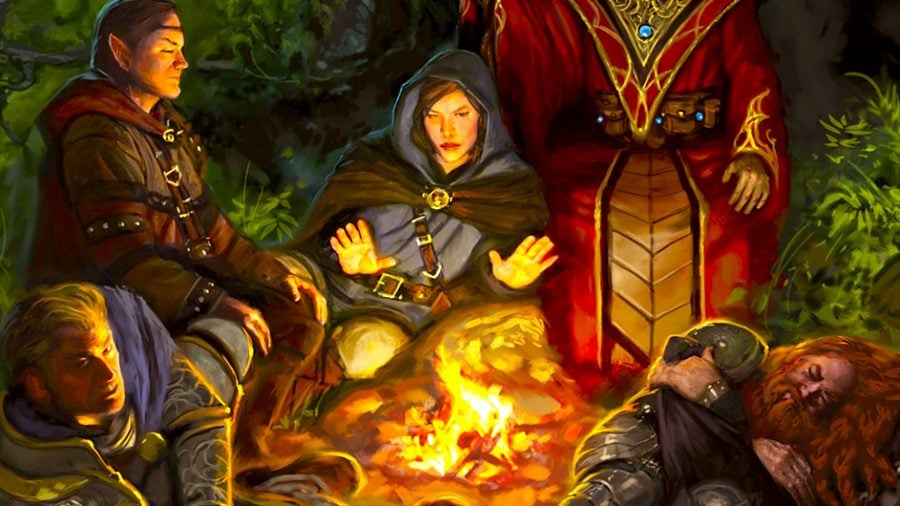It’s not always plain sailing in a game of Dungeons and Dragons – DnD conditions make sure of that. Many of these status effects have fairly clear effects on a player, but there’s one condition that requires a bit more thinking. In fact, many Dungeon Masters, whether they’re seasoned veterans or learning how to be a DM in D&D for the first time, will omit exhaustion 5e completely from their games.
This is because DnD exhaustion 5e can be a harsh, hard-to-remove condition that may overwhelm inexperienced players. However, it can also also be a powerful tool for adding tension or realism to DnD campaigns. Often the true Big Bad Evil of a game is starvation or extreme weather, not some beast or baddie like a Beholder or Strahd. Exhaustion is an excellent storytelling device in the right hands, and it’s worth taking the time to understand.
If you’re after a quick refresher on exhaustion, look no further. We’ve got all the info here – without needing you to crack open a Player’s Handbook or Dungeon Master’s Guide.
Here’s a guide to DnD exhaustion 5e:

What is exhaustion 5e
Imagine what exhaustion looks like in real life, and you’ve already got a pretty good idea of what it means in D&D. Overexerting yourself in some way tests your Constitution, eventually leaving you sluggish, tired, and struggling to function. And too much exhaustion will kill.
Take the oath: A D&D Paladin 5e class guide
As you can imagine, a realism-focused game of D&D is full of exhaustion. You’re in and out of near-constant combat, travelling miles in harsh climes, and only rarely catching a decent night’s sleep. All of these things can cause a character to become exhausted.

Exhaustion 5e triggers
Officially, the Player’s Handbook says “environmental hazards, such as starvation and the long-term effects of freezing or scorching temperatures” can cause exhaustion. The Dungeon Master’s Guide offers advice on some of these exhaustion triggers – for example, a party must succeed on a DC ten Constitution saving throw every hour they’re exposed to temperatures below zero or above 100 degrees Fahrenheit (that last one only applies if there’s also no drinking water available). Creatures that spend more minutes in frigid water than is equal to their Constitution score also must succeed on a DC ten Constitution saving throw to prevent exhaustion.
Additionally, the Player’s Handbook says characters require one pound of food per day and one gallon of water (in normal weather) to avoid exhaustion. (There are extra food and drink rules for NPCs in the Dungeon Master’s Guide.) You can go without food for as many days as equal to three plus your Constitution modifier (with a minimum of one). Every day beyond that limit, however, adds a new level of exhaustion.
Water is much harsher – if you drink even half the water you need in a day, you must succeed on a DC 15 Constitution saving throw to prevent exhaustion. Anyone with no access to water automatically gains exhaustion at the end of a day.
Ability scores: Here’s our guide to DnD stats
Other potential exhaustion triggers include rowing or travelling for more than eight hours a day, swimming for more than an hour, or going more than 24 hours without a long rest. Dashing too many times during a chase also causes exhaustion – you can only dash a number of times equal to three plus your Constitution modifier before this happens, and you gain a new level of exhaustion for every additional dash.
Sickening Radiance is currently the only DnD 5e spell that inflicts exhaustion on other creatures, and Tenser’s Transformation can inflict exhaustion on you if you fail a saving throw after casting the spell. Barbarians who choose the Path of the Berserker subclass can also self-inflict a level of exhaustion after going into a frenzy.
D&D monsters can cause exhaustion in some cases. The Monster Manual doesn’t include any monsters with this ability, but they do exist in other D&D books. The list includes the Gingwatzim, the Sibriex, the Corrupted Giant Shark, and the Kalaraq Quori.

Levels of exhaustion 5e
Exhaustion doesn’t have just one effect on a character. There are six different levels of exhaustion, and each effect stacks rather than replaces the ones lower down in the list.
These are the six levels of exhaustion in D&D 5e:
| Level | Effect |
| 1 | Disadvantage on ability checks |
| 2 | Speed halved |
| 3 | Disadvantage on attack rolls and saving throws |
| 4 | Hit point maximum halved |
| 5 | Speed reduced to zero |
| 6 | Instant death |

How to remove exhaustion 5e
The most cost-efficient way to remove exhaustion is simply to rest. A long rest, plus some food and water, immediately reduces a creature’s exhaustion level by one. If your DM is running a more lenient game, they may also allow short rests or rests without food and water to reduce exhaustion.
Armour up: A DnD armor 5e guide
The only spell that can reduce exhaustion is Greater Restoration. This can be cast by your party’s Bard, Cleric, or Druid – but using a fifth-level abjuration spell to reduce exhaustion by one level isn’t the greatest trade-off. Some items might also be able to help with exhaustion. This can include a Potion of Vitality, the Ring of Temporal Salvation from Explorer’s Guide to Wildemount, or a D&D homebrew item of your own devising. But again, we can’t stress just how much more efficient it is to simply rest. Self-care is important, even in D&D.
Source: Wargamer




